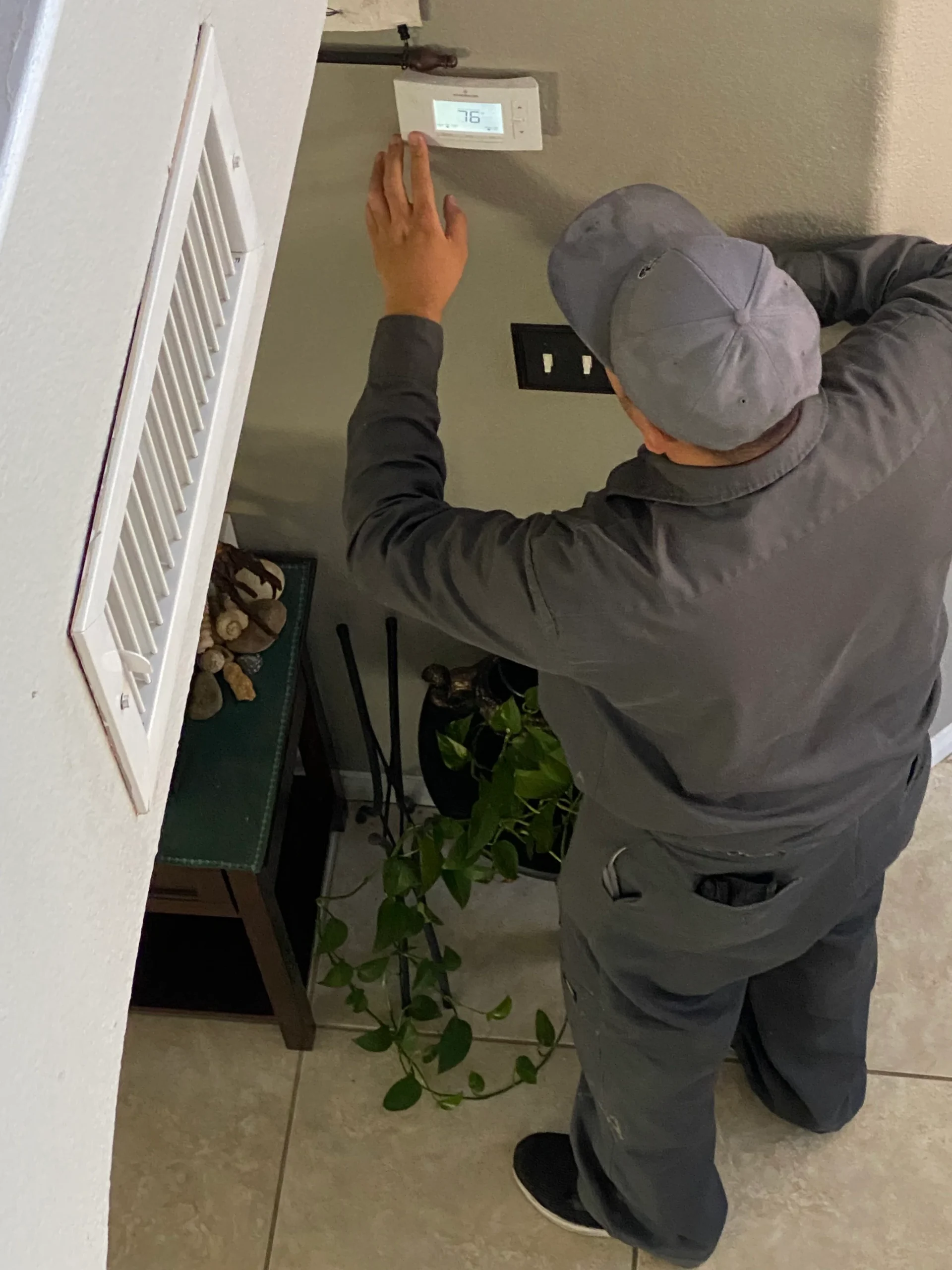Repair AC
Reliable Repair AC in Las Vegas ~ Eco Friendly Air
Central air conditioners circulate cool air through a system of supply and return ducts. Supply ducts and registers (i.e., openings in the walls, floors, or ceilings covered by grills) carry cooled air from the air conditioner to the home. This cooled air becomes warmer as it circulates through the home; then it flows back to the central air conditioner through return ducts and registers. To learn how central air conditioners compare to other cooling systems, check out our Energy Saver 101 Infographic: Home Cooling.
Air conditioners dehumidify the air to improve comfort. However, in extremely humid climates, when outdoor temperatures are moderate, or in cases where the air conditioner is oversized, the air may not reach a low enough humidity to achieve a comfortable level. In those instances, homeowners may reduce the thermostat setting or use a dehumidifier. But in both cases this will increase energy use, both for the dehumidifier itself and because the air conditioner will require more energy to cool the house. Schedule now
If you have a central air system in your home, set the fan to the “auto” mode. In other words, don’t use the system’s central fan to provide air circulation — use circulating fans in individual rooms. Schedule now
Types of Central Air Conditioners
A central air conditioner is either a split-system unit or a packaged unit.
In a split-system central air conditioner, an outdoor cabinet contains the outdoor heat exchanger, fan, and compressor, and an indoor cabinet contains the indoor heat exchanger and blower. In many split-system air conditioners, the indoor cabinet may contain the a furnace or the indoor heat exchanger of a heat pump. If your home already has a furnace but no air conditioner, a split-system may be the most economical central air conditioner to install.
In a packaged central air conditioner, the heat exchangers, compressor, fan, and blower are all located in one cabinet, which usually is placed on a roof or on a concrete slab next to the house’s foundation. This type of air conditioner also is used in small commercial buildings. The supply and return ducts come from indoors through the home’s exterior wall or roof to connect with the packaged air conditioner. Packaged air conditioners often include electric heating coils or a natural gas furnace. This combination of air conditioner and central heater eliminates the need for a separate furnace. Schedule now
Installation and Location of Air Conditioners
If your air conditioner is installed correctly, or if major installation problems are found and fixed, it should perform efficiently for years with only minor routine maintenance. However, many air conditioners are not installed correctly. As an unfortunate result, modern energy-efficient air conditioners can perform almost as poorly as older inefficient models.Schedule now
When installing a new central air conditioning system, be sure that your contractor:Schedule now
- Allows adequate indoor space for the installation, maintenance, and repair of the new system
- Uses a duct-sizing methodology such as the Air Conditioning Contractors of America (ACCA) Manual D
- Ensures there are enough supply registers to deliver cool air and enough return air registers to carry warm house air back to the air conditioner
- Installs duct work within the conditioned space, not in the attic, wherever possible
- Seals all ducts with duct mastic and heavily insulates ducts
- Locates the condensing unit where its noise will not keep you or your neighbors awake at night, if possible
- Locates the condensing unit where no nearby objects will block airflow to it
- Verifies that the newly installed air conditioner has the exact refrigerant charge and airflow rate specified by the manufacturer
- Locates the thermostat away from heat sources, such as windows or supply registers. Schedule now
Choosing or Upgrading Your Central Air Conditioner
Central air conditioners are more efficient than room air conditioners. In addition, they are out of the way, quiet, and convenient to operate. To save energy and money, you should try to buy an energy-efficient air conditioner and reduce your central air conditioner’s energy use. In an average size home, air conditioning consumes more than 2,000 kilowatt-hours of electricity per year, causing power plants to emit about 3,500 pounds of carbon dioxide and 31 pounds of sulfur dioxide.
If you are considering adding central air conditioning to your home, the deciding factor may be the need for ductwork. Schedule now
The most efficient air conditioners use 30% to 50% less energy to produce the same amount of cooling as air conditioners made in the mid 1970s. Even if your air conditioner is only 10 years old, you may save 20% to 40% of your cooling energy costs by replacing it with a newer, more efficient model.
Proper sizing and installation are key elements in determining air conditioner efficiency. Too large a unit will not adequately remove humidity. Too small a unit will not be able to attain a comfortable temperature on the hottest days. Improper unit location, lack of insulation, and improper duct installation can greatly diminish efficiency.
When buying an air conditioner, look for a model with a high efficiency. Central air conditioners are rated according to their seasonal energy efficiency ratio (SEER). SEER indicates the relative amount of energy needed to provide a specific cooling output. Many newer systems have SEER ratings as high as 26.Schedule now









